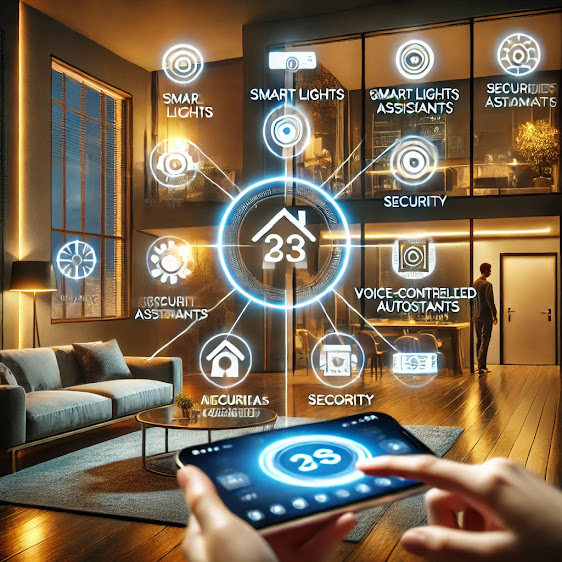Smart Homes and real estate Part 2 of 3: Potential downsides to installing and depending on today's popular smart home features
Hello and welcome to Part 2. While smart home features offer convenience, security, and energy efficiency, they also come with some downsides as I hinted at in part 1. Here are some potential drawbacks for you to consider as well as ways to offset them:
1. Security & Privacy Risks 🔐
- Hacking Vulnerabilities – Smart devices connected to Wi-Fi can be targets for cyberattacks, allowing hackers to access security cameras, smart locks, or personal data.
- Data Privacy Concerns – Many smart home devices collect user data, raising concerns about how that data is stored and shared.
- Device Exploits – Poorly secured smart devices can be used in botnet attacks, for instance the widely covered IOT (Internet of Things) Mirai botnet incident in 2016.
Mitigation: Use strong passwords, enable two-factor authentication, and regularly update firmware.
2. High Initial Costs 💰
- Expensive Upfront Investment – Smart locks, thermostats, and security systems can be costly, especially when outfitting an entire home.
- Subscription Fees – Many smart security systems and cloud storage services (e.g., Ring, Nest Aware) require ongoing monthly fees.
- Upgrading Costs – Older homes may need rewiring, strong Wi-Fi, or additional hubs to support smart features.
Mitigation: Start with essential devices first (e.g., smart thermostat, security system) and consider expanding as needed.
3. Dependency on Internet & Power ⚡
- Device Malfunctions in Outages – Most smart home features rely on Wi-Fi and electricity; if either goes out, devices may stop functioning.
- Lag or Connectivity Issues – Weak Wi-Fi signals can cause delays in device responses or automation failures.
- Cloud Reliance – Some devices require cloud connectivity to function, meaning server outages can disrupt access.
Mitigation: Invest in a reliable mesh Wi-Fi system, battery backups, or local storage options for security cameras.
4. Compatibility Issues 🔄
- Different Ecosystems Don’t Always Work Together – Apple HomeKit, Google Home, and Amazon Alexa each have their own ecosystems, and not all devices support cross-platform functionality.
- Firmware & Software Updates – Some devices stop receiving updates, leading to outdated security protocols and limited functionality over time.
Mitigation: Choose devices with open compatibility (e.g., Matter-certified products) and check long-term support policies before you purchase.
5. Learning Curve & Complexity 🧠
- Setup & Configuration Can Be Challenging – Some smart home devices require complex setups, which may not be user-friendly for everyone.
- Multiple Apps & Controls – If different brands are used, homeowners may end up managing several apps instead of a single integrated system.
- Technology Fatigue – Some users may find constant notifications, updates, and troubleshooting overwhelming.
Mitigation: Opt for centralized control hubs like SmartThings, Google Home, or Home Assistant to unify multiple devices or hire an installation specialist.
6. Short Product Lifespan & Obsolescence 🕰️
- Devices Can Become Outdated Quickly – As technology advances, some devices may no longer receive updates, making them obsolete. For my part this has always been the most frustrating area of technology. Today is one thing and tomorrow is another.
- Manufacturer Shutdowns – Some companies stop supporting older products, rendering them useless (e.g., Google’s Revolv hub).
- Non-Repairable Devices – Many smart devices are difficult or impossible to repair, leading to more e-waste.
Mitigation: Buy from reputable brands with long-term support and avoid niche, unsupported products.
7. Privacy Invasion & Eavesdropping Concerns 🎙️
- Smart Assistants Always Listening – Devices like Alexa, Google Assistant, and Siri continuously listen for wake words, raising concerns about accidental recordings.
- Data Sharing with Third Parties – Some companies sell user data to advertisers, leading to targeted ads and privacy concerns.
- Unauthorized Access – If improperly secured, smart cameras or baby monitors could be accessed by outsiders.
Mitigation: Regularly check privacy settings, disable unnecessary voice recordings, and review company policies on data usage.
8. Limited Resale Value for Some Smart Homes 🏡
- Buyers May Have Different Preferences – Some homebuyers may not appreciate or approve of smart home tech.
- Obsolete Tech at Sale Time – A smart home from today may feel outdated in 5-10 years if not regularly upgraded.
Mitigation: Focus on high-value, long-lasting smart features (e.g., smart thermostats, security systems) rather than niche/potentially superfluous gadgets.
In Summary/Final Thoughts
Smart home technology offers great benefits, but it’s not without challenges. The key is balancing convenience with security, cost, and long-term usability. If you’re investing in smart home features, I suggest that you prioritize reputable brands and keep security measures in place while emphasizing reliable connectivity. For part 3, I will be addressing the subject from the point of view of the return on investment (ROI) as it relates to recommendations based on home type and market.
As always, thank you for reading and feel free to comment or like the post...

.png)



Comments
Post a Comment